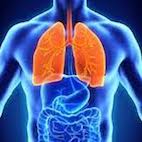 Tuberculosis is an infectious disease with high prevalence in some parts of the world. A recent meta-analysis shows that alcohol consumption, mainly heavy, is associated with an increased risk of tuberculosis and is related to an increased disease burden. The results of this research are recently published in the scientific journal European Respiratory Journal.
Tuberculosis is an infectious disease with high prevalence in some parts of the world. A recent meta-analysis shows that alcohol consumption, mainly heavy, is associated with an increased risk of tuberculosis and is related to an increased disease burden. The results of this research are recently published in the scientific journal European Respiratory Journal.
What is already known? Alcohol, particularly heavy consumption, is a risk factor of tuberculosis (tbc).
What does this study add? The researchers analysed the association between the risk of tuberculosis and different variables of alcohol consumption. They looked at the difference between drinkers and non-drinkers, and alcohol-related problems as risk factors for tuberculosis. They also investigated the dose-response relationship.
Regional differences
In 2015, over 10 million people were infected with tbc globally. Additionally, each year over 1 million people die from the disease. Estimates indicate that tbc contributes to 2% of all death worldwide. The disease is especially prevalent in southern Africa and Southeast Asia1.
In Europe, the number of tbc cases has decreased significantly over the past 10 years, and incidence is among the lowest in the world, especially in West European countries2.
Increased risk
The current meta-analysis1, which includes 36 studies, indicates that alcohol consumption is associated with an increased risk of tbc. It appears that the risk of tbc increases with increasing alcohol consumption, with indications that there is a threshold effect. Various analyses show the following: compared with non-drinking, total average alcohol consumption is associated with an 35% increased risk of tbc. When looking at different amounts of alcohol consumption the results show that consumption of more than 60g of alcohol per day is significantly associated with an 68% increased risk. Alcohol-related problems, such as alcohol use disorders or alcoholic liver cirrhosis, are associated with a threefold increased risk of tbc. There also appears to be a trend that for each gram of alcohol there is a 2% increased risk of tbc.
Disease burden
The researchers estimate that in 2014 over 1.5 million tbc cases were caused by alcohol consumption, corresponding to 22 cases per 100,000 people. The researchers also calculated that alcohol consumption causes almost 170,000 tbc deaths, corresponding to 2.35 deaths per 100,000 people. In both cases, the most cases are found in southern Africa and South-East Asia. Looking at the European Region, disease burden is mainly high in east European countries such as Bulgaria, Estonia, Russia, Romania and Turkey. All taken together, alcohol is responsible for 17% of tbc incident cases and for 15% of deaths due to tbc.
Mechanisms
The researchers did not investigate why alcohol could increase the risk of tbc, but they describe two possible mechanisms that could explain the association between alcohol and tbc. First, alcohol consumption impairs the immune system, which increases susceptibility to TBC infection, as well as the reactivation of latent TBC. The ability of the immune system to respond to new and dormant mycobacteria is affected. Secondly, alcohol consumption is related to more presence in social environments, giving a tbc infection more chance to spread.
Tuberculosis
Tuberculosis is caused by the Mycobacterium tuberculosis. Lung tuberculosis is most prevalent, but also other parts of the body can be infected. Tbc can be treated with a combination of different antibiotics. A treatment takes at least 6 months and can have side effects. When the disease is not treated, or not treated correctly, it can be lethal3.
Strengths of this study
• Several variables of alcohol consumption are analysed.
• Dose-response association is investigated.
• During study selection, special attention is paid to the timing of measurements of alcohol consumption. After diagnosis of tbc, alcohol consumption often decreases.
• Alcohol-attributable burden of disease is estimated.
Limitations of this study
• Only observational studies are included, therefore no cause-effect associations are found.
• Study searches is limited to two databases.
• No distinction is made between drug-susceptible TBC and multidrug-resistant TBC.
• Measurements of alcohol consumption are susceptible to recall bias and misclassification.
• Possible changes in alcohol consumption over time have not been taken into account.
• Alcohol-related problems are not all measured with standard diagnostic criteria.
• Large differences between the studies that are included.
• Low number of studies for sub-group analyses.
• Inaccurate data on alcohol-attributable burden of disease.
• Alcohol is not the only factor contributing to the presence in social environments.
References
1. Imtiaz, Shield, K. D., Roerecke, M., Samokhvalov, A. V., Lönnroth, K., and Rehm, J. Alcohol consumption as a risk factor for tuberculosis: Meta-analyses and burden of disease. European Respiratory Journal, vol. 50, nr. 1, 2017.
2. World Health Organisation- Health Topics – Basic facts on tuberculosis (TB) in the WHO European Region. Accessed on: 07-09-2017
3. World Health Organisation – Fact Sheets – Tuberculosis. Accessed on: 06-09-2017
